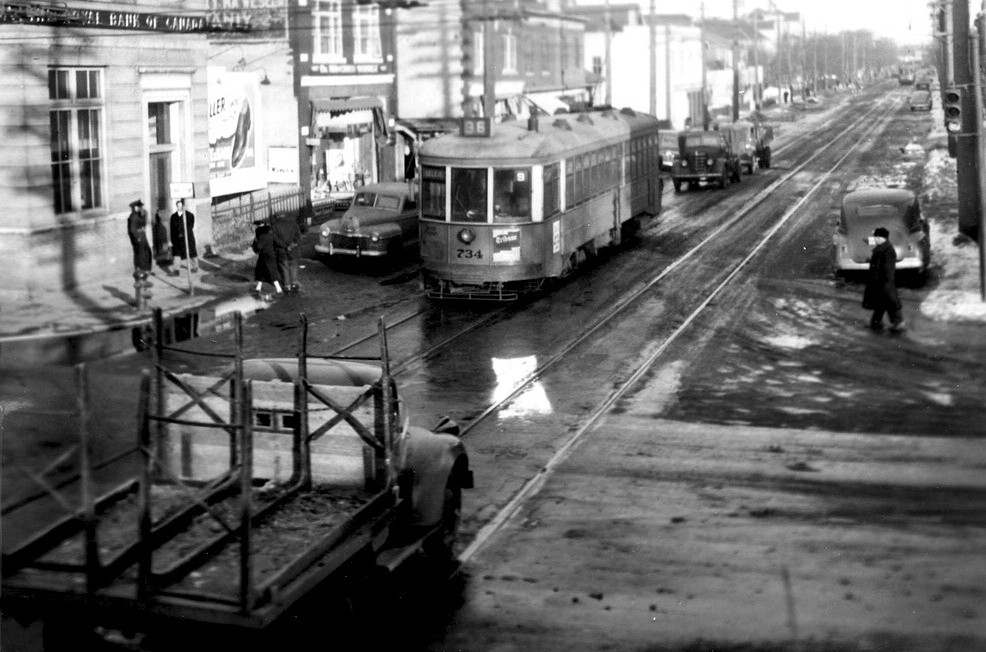Like most eating establishments that hang around long enough to reach the status of beloved local institution, the popularity of Kelekis Restaurant on Main Street is not so much because of the excellence of the food (let’s be honest here) as it is because going there is a traditions for its patrons. And so when Kelekis announced late last week that they would be closing after some 80 years in operation, much of the local commentary focused on childhood memories of the place, rather than on how delicious the hot dogs and skinny fries are.

Perhaps no local institutions are as tied to the neighbourhoods around them as Kelekis is to the North End. The historical North End remains one of Canada’s most mythical neighbourhoods, and was essentially a city unto itself: the industries crowded alongside the CPR yards; the desperate tenements around Lord Selkirk Park; the modest bungalow belt north of Church Avenue; the relatively upscale tree-lined enclave north of St. John’s Cathedral; and, of course, the thriving commercial centre that was Selkirk Avenue.
The North End was a neighbourhood of immigrant struggles and dreams. Physically and socially distinct from the rest of Winnipeg, over time it would come to define it, as the children and grandchildren of penniless new immigrants gradually replaced the city’s ruling WASP order. Other North Enders would move on to great success across the world, and celebrities like Monty Hall and David Steinberg, whose pictures hang on Kelekis’s walls, grew up on the streets nearby.

While Kelekis will close its doors in January, there remain a number of eating establishments where the North End can still be experienced–in all of its inexpensive, deep-fried glory. On Main near Stella Avenue, Angelo’s Chip Shop, with a small seating area and take-out window to the sidewalk, has operated (under different names) almost as long as Kelekis has. The North Star Drive-In on McGregor Street is another take-out window, and serves great veggie burgers and milkshakes.
The Windmill Cafe on Selkirk Avenue acts as a time capsule of the old days of greasy-spoons, but also as informal community space for the neighbourhood today. Juney’s and Connie’s, among other diners, do much the same thing.
The community halls and church basements are perhaps the best places to find traces of the old immigrant neighbourhood. Sitting with a plate of bratwurst and a glass of Holsten in the German Club on Charles Street on a Saturday afternoon, with the din of old members engaged in a bull session in the corner, provides all the old North End authenticity one could ever hope to experience in 2012.
Meanwhile, the best Thai food in the city is at Lao Thai on Selkirk Avenue. A tiny space in a nondescript storefront near Arlington, it first opened eight years ago, and after a brief excursion to St. Vital, is back in operation on Selkirk. May this wonderful little place stay open as long as Kelekis did.
But while the historical North End has helped define Winnipeg for the rest of the world, so, too, has its growing problems with crime and decline.
Despite so much of their social-democratic roots coming from the North End, the only meaningful attention Manitoba’s NDP government has paid to the neighbourhood has been in order to keep partisan activists happy and quiet with chump change programs and posturing. To today’s NDP, helping the North End doesn’t matter as much as securing votes in Southdale does.
City Hall and boosterism groups like the Chamber of Commerce have, for their part, been too short-sighted to recognize that while every Canadian city has its troubled neighbourhoods, none are as defined by them as Winnipeg is by the North End. From a purely economic perspective, this limits the city’s ability to attract and keep people and investment here.
It may be that, one by one, the old places all die out, and the memories of the immigrant neighbourhood of the twentieth century will only live on, like the frozen horses in Guy Maddin’s My Winnipeg, as kernels of truth wrapped in fantasy.
Whatever happens, the North End can no longer remain islands of institutional remnants and greasy-spoons amidst a sea of violence and abandonment. It must be a safer and more stable neighbourhood for the people who live there; a good place where its residents can work, go to school, raise a family, grow old, and feel rooted to the community. This, much more than its skinny fries, was what made the North End great.
____
Robert Galston likes to write about Winnipeg, urbanism, and other very, very exciting topics. Follow him on Twitter @riseandsprawl
For more, follow us on Twitter: @SpectatorTrib
